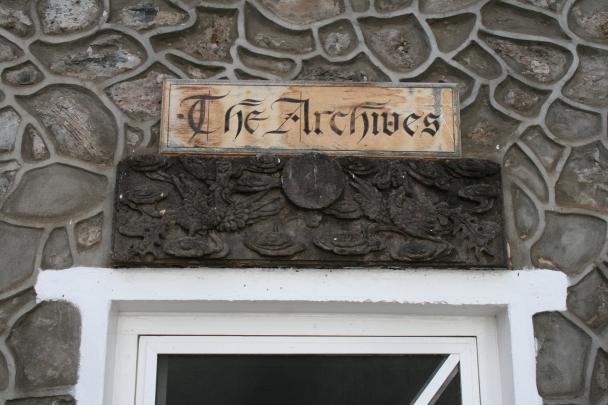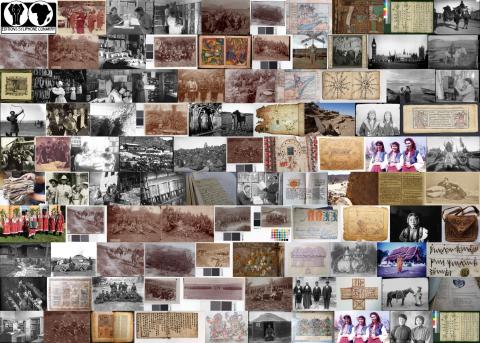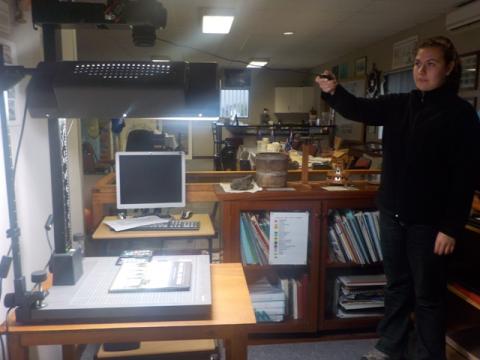
Aims and objectives
St Helena was first discovered in 1502 and English rule, under the auspices of the East India Company (EIC), was established in 1659. Although best known for its association with Napoleon, the island has a longer contribution to history in terms of colonialism, empire-building, and the slave trade and its suppression. It was a way-station between Europe, India and the East, and as such was pivotal in the creation of the British Empire. In the 18th century hundreds, and occasionally thousands, of merchant ships called there every year. From its earliest association with the EIC, St Helena employed coerced labour, but after 1807 became an important base for British slave trade suppression in the Atlantic. The island’s remoteness has, from time to time, also led to its use as a place of imprisonment: in addition to Napoleon, it has housed Boer POWs, Zulu chiefs and Middle Eastern dissidents.
The island’s archives in Jamestown hold records from its first years as an English colony. The earliest documents date from 1673 and include EIC records through to 1834. These embody correspondence with England, internal memos, land grants and legal proceedings. There is also extensive documentation relating to Napoleon’s exile, including his death certificate. After 1834 and the transition to direct Crown rule, the records follow the standard pattern of similar colonies. Much of the higher-level correspondence between the island’s Governor and the Colonial Office is replicated in the UK National Archives. However, there is a great deal of local-level material in Jamestown which was never transmitted to London: this includes official records and accounts, private correspondence, maps, land titles, legal proceedings, bill posters, local newspapers and unpublished historical research. Overall, the Jamestown archive offers a record of the history, people and daily life of the colony from the late 17th century onwards.
This provides a vital historical context for its extensive built and archaeological heritage. Many of the surviving documents have international significance and are unique to the island. They do not exist anywhere else.
The Archive is held in two repositories: a room in which bound folios are kept on shelves, and a second room in which bound and unbound documents are stored in unlabelled packaging. The content of the latter room is almost entirely unknown but preliminary research has demonstrated that at least some of this material is of significant historical value – for example St Helena’s Vice-Admiralty Court records.
The archive is at risk from catastrophic loss and long-term deterioration. It is housed on the ground floor of an historic building that is poorly equipped and maintained. Lack of temperature control places the records at risk from tropical weather, especially humidity, and from insect infestation, notably termites. The condition of the individual documents is very variable, from good to very poor, from stable to demonstrably deteriorating, and from well- to loose-bound. There are no microfilm or digital copies of any materials, and therefore all research is carried out on the original documents. Some of the most valuable items, including the early EIC records and documents relating to Napoleon, are at greatest risk. Facilities for reading documents are very poor.
This pilot project will focus on the materials dating from 1673 to 1914. This covers all of the key episodes in the island’s EIC and colonial history, ending with the Boer War and the establishment of the Atlantic telegraph. The objectives of the project are to:
- provide equipment for the digitisation process;
- begin the process of digitisation;
- lay the foundations for a Major EAP grant (if feasible, and if supported by St Helena Government)
- develop local skills such that, ideally with additional funding, the digitisation process may continue.
The pilot project will:
- provide an audit of archive material at Jamestown;
- establish a priority list for digitisation, based on historical value, stability, fragility, amount of use, and level of duplication elsewhere;
- pilot digitisation processes and associated cataloguing, focusing on an early series of EIC letter books;
- provide training for local staff.
The opening of the island’s airport (now under construction and expected to be completed in 2015) will improve access and bring in additional visitors, increasing pressure on archive resources and their potential deterioration.
The work will be carried out primarily by Dr Andrew Pearson, who has extensive experience of both archaeological and archive-based research on the island, a strong publishing record relating to St Helena’s history, and very good working relationships with key local officers and archivists. This project is fully supported by the St Helena National Trust and the Museum of St Helena, the two local organisations with a remit for the island’s cultural heritage.
Outcomes
An audit was undertaken of all historical records in the Archive, up to 1900.
The project digitised 17 documents. This generated 4,234 digital photographs in RAW format, from which a parallel set of images were exported in TIFF format. The project’s primary focus in relation to digitisation was the earliest East India Company records. Ten volumes were digitised: St Helena Records, Volumes 1 to 6 (1678-1703); Letters from England (3 volumes, 1673-1701); Goodwin's Abstracts - Letters from England (1673-1707).
In addition, a further seven documents were digitised as part of a wider trialling process. These do not comprise a coherent group of historical material, but were selected in order to test the methodology on documents of varying size and condition, and with different types of binding. Given that the EIC volumes listed above are largely representative of the 17th- and early/mid 18th-century records as a whole within the Archive, the focus of this additional trialling was on the 19th-century.
Work with local staff and heritage personnel was carried out as an integral part of the project. The core group comprised the two full-time archivists, St Helena Government’s Information Officer and the Museum Director. Thus it was ensured that, after the end of the pilot project, the digitisation and listing could be continued with minimal off-island support. A series of process descriptions and guidance notes were produced to aid the training process.
Survey report:
Quick download (Text only, without images. PDF document 766KB)
Full report (Large size, PDF document 15100 KB)
The records copied by this project have been catalogued as:
- EAP524/1 Governor of St Helena, East India Company, Records [1673-1707]
- EAP524/2 Governor of St Helena, Crown Colony, Records [1841-1924]
Due to the cyber-attack on the British Library in October 2023, the archives and manuscripts database is currently inaccessible and we are unable to provide links to the catalogue records for this project.
EAP524/2/3/1: Banns of Marriage [1849-1924] has been transcribed and indexed by Families in British India Society.




